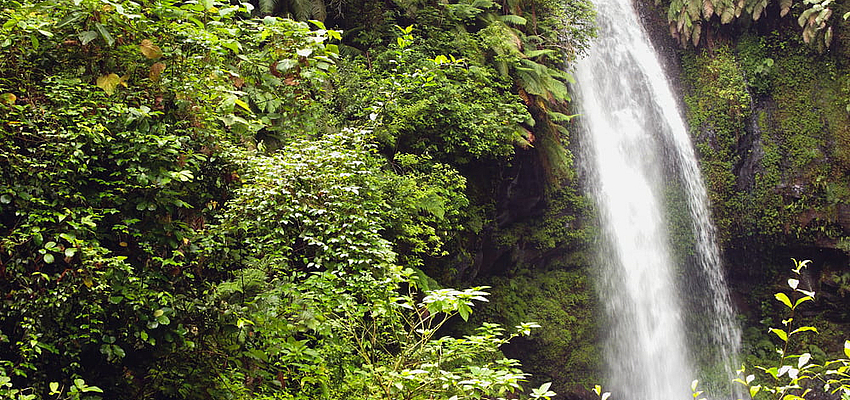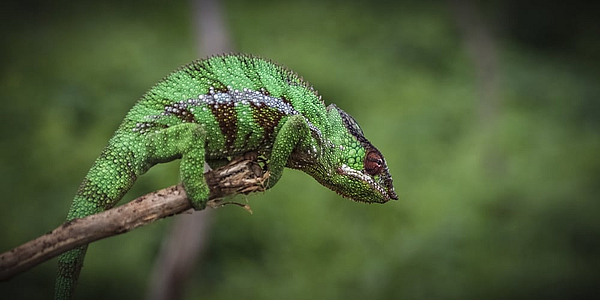


The Amber Mountain National Park is forty kilometres from the city of Diego-Suarez, in northern Madagascar. The park is at an altitude of 850 to 1500 metres above sea level which creates a damp and fairly cool tropical climate, particularly in winter when the temperature can go down to 5°C. The average temperature in the rest of the year is around 17°C, making the park an oasis of coolness for visitors.
After trekking in the Ankarana National Park, under a blazing sun, you will realise that a walk in the shade of the trees of the Amber Mountain makes a very pleasant change!
The park is made up of a volcanic massif which houses more than 23,000 hectares of forest, of which 18,000 are designated as National Park and can be visited, the remainder is designated as a Special Reserve and can only be accessed for scientific missions.

This rainforest is made up of a great many native plant species, such as the Canarium madagascariensi, cycas, huge ficus with trunks that are often covered in other plants that use them as a growing medium, such as ferns and many species of orchids.
The animals in the park will delight nature lovers and birdwatchers. there are more than 75 bird species living in this protected area. You may also see several species of diurnal and nocturnal lemurs as well all kinds of herpetofauna. This odd-sounding name does not refer to a strange animal, it designates all reptiles and amphibians in an area of the park which is home to many specimens, including the world's smallest chameleon, which is no bigger than a finger.
The entrance to the Amber Mountain National Park is 3 kilometres from the town of Joffreville. The best time to visit is during the months of September, October and November. The track to the park is hard to access during the rainy season.
You can get there by booking a return ticket with one of the many tour operators in Diego-Suarez. I have been there by taxi, but the poor old car nearly conked out on the way... From Joffreville, the track that leads to the park is full of huge crevasses which are hard to get round in a four-wheel-drive vehicle, so many taxis refuse to go there. Make sure you agree on the fare with the driver beforehand to avoid any nasty surprises. You can also take a bush taxi to Joffreville and walk to the park.
You can visit the park in one day from Diego-Suarez or you can spend the night in a gite or on one of the campsites within the park. If you do spend the night there, you'll be able to see some of the chameleons and lemurs which are more active and easier to spot at night.
6 trekking trails enable visitors to explore the flora and fauna of the park and see many of its rivers, waterfalls and lakes. I would recommend going to see Lake Mahasarika. Despite being the smallest, I think it's the loveliest.
The National park also has lots of sacred waterfalls and the local people leave offerings beneath them. Lac Maudit (the Cursed Lake) is also a sacred place and you are not allowed to swim in it. Legend has it that horsemen drowned in the swamps around the lake.